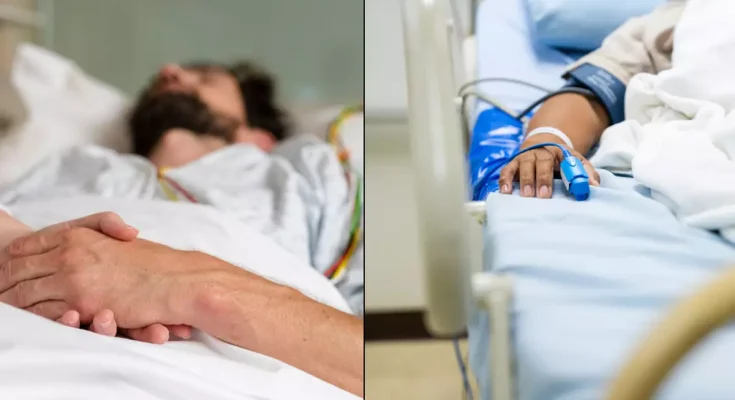You may or may not know, but people who are dying usually exhibit clear signs that they’re knocking on death’s door.
According to the NHS, a body is likely to go through many changes during the last days of your life.
And while it’s difficult to predict what will happen, it’s important to become familiar with common signs so you may prepare to witness someone approaching the end of their life.
It’s also understood that these end-of-life symptoms may last hours or even days when someone is in the terminal phase.
Below, we’ve listed some of the key changes that take place when the body is shutting down, including irregular breathing and hallucinations.
Becoming drowsy
Experts claim people experiencing the last days of their lives are likely to exhibit lower energy levels than usual.
They’ll often spend more time sleeping and slip in and out of consciousness more frequently.
Moreover, a drowsy person may lose interest in doing things they enjoyed before, writes Marie Curie.
They also may need help with going to the toilet and washing.
Not wanting to eat or drink
It’s likely that in a person’s final days, their digestive system and kidneys will begin to shut down, thus making eating and drinking extremely difficult.
Moreover, some people may be too sleepy or weak to swallow, so it’s pretty common that eating and drinking will be little more than an afterthought.
The NHS advises that you shouldn’t panic if your loved one declines to eat or drink and that you can discuss alternatives with healthcare professionals.
It’s also stated that if a patient can’t drink water, their lips should be whetted instead.
 It’s important to identify the signs of a person’s body shutting down (Getty stock image)Changes in breathing patterns
It’s important to identify the signs of a person’s body shutting down (Getty stock image)Changes in breathing patterns
Those entering the final hours of their lives may notice a stark change in usual breathing patterns.
“Your breathing may become less regular,” writes the NHS. “You may develop Cheyne-Stokes breathing when periods of shallow breathing alternate with periods of deeper, rapid breathing.”
According to experts, this type of deep, rapid breathing may be followed by a slight pause before starting up again.
Breathing also has the chance of becoming more noisy or sounding like a rattle due to intense mucus build-up.
Confusion and hallucinations
Various end-of-life medications can cause a chemical imbalance in the brain, sometimes causing confusion or hallucinations.
WebMD experts classify hallucinations as false perceptions, where you sense an object or an event even though they’re not there or it didn’t happen.
These out-of-character moments can be distressing for family or carers.
Trained medical teams can rule out or treat any underlying causes, such as pain, breathing problems or infection, or calm the person who is dying, writes the NHS.
However, if no underlying cause can be identified, there are medicines that can ease distress.
 End of life changes can include cold limbs and hallucinations (Getty stock image)Cold hands and feet
End of life changes can include cold limbs and hallucinations (Getty stock image)Cold hands and feet
Reduced circulation can lead to people’s feet and hands becoming cold and is a normal part of the dying process.
While people with lighter skin tones may have a slightly blue tone, it’s easier to see the chill on darker skin tones.
Occasionally, a person’s hands or other body parts may swell a little, says NHS inform. This usually isn’t painful or uncomfortable.



